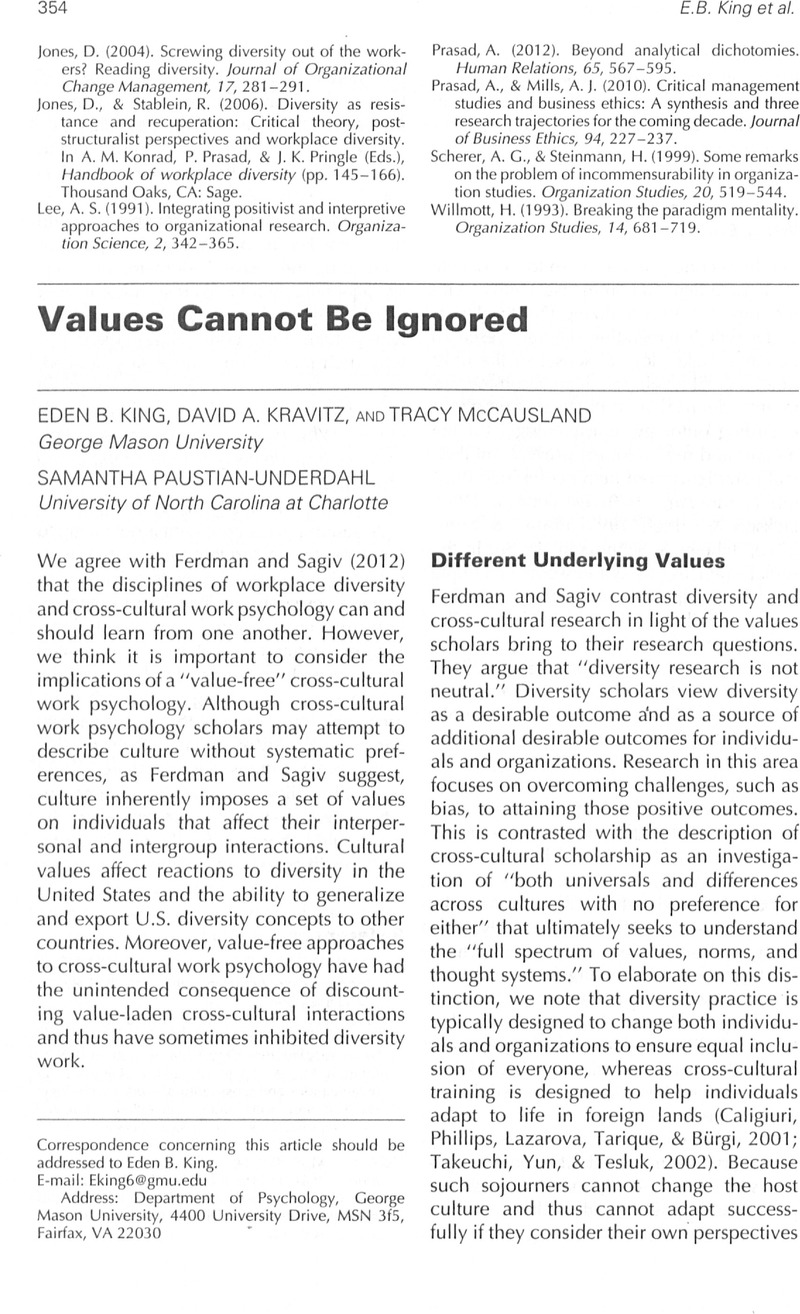Crossref Citations
This article has been cited by the following publications. This list is generated based on data provided by Crossref.
Ferdman, Bernardo M.
and
Sagiv, Lilach
2012.
The Value of Connecting Diversity in Organizations and Cross-Cultural Work Psychology Through Dialogue and Multiplicity.
Industrial and Organizational Psychology,
Vol. 5,
Issue. 3,
p.
373.





